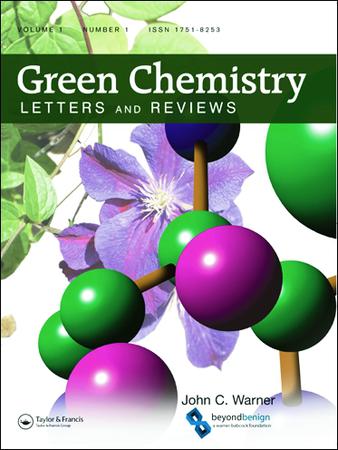利用植物介导的氧化铜纳米颗粒(CuO NPs)抑制植物致病菌、真菌和线虫的生长
IF 5.8
3区 化学
Q1 CHEMISTRY, MULTIDISCIPLINARY
引用次数: 4
摘要
本文章由计算机程序翻译,如有差异,请以英文原文为准。
Mitigating the growth of plant pathogenic bacterium, fungi, and nematode by using plant-mediated synthesis of copper oxide nanoparticles (CuO NPs)
ABSTRACT
Nanoparticles of copper oxide were synthesized from the Spirodela polyrrhiza (greater duckweed) plant. Ultraviolet spectroscopy absorbance of around 400 nm was used for nanoparticle characterization. The presence of copper and oxygen in the biogenic nanoparticles was analyzed by the EDX technique. Based on scanning, and transmission electron microscopy (SEM and TEM) results, copper oxide nanoparticles (CuO NPs) are evenly distributed and spherical, and their sizes are in the 100 nm range. The synthesized nanoparticles of copper oxide were tested for antibacterial, antifungal, and nematicidal effectiveness against plants pest and pathogens. Antifungal and nematicidal activity against pests and plant pathogens was observed, with fungal mycelium reduced by 45–50% and eggs hatching. The findings suggest that plant-based copper oxide nanoparticles could be a potential source of plant pathogen inhibition. From this study, we concluded that synthesized CuO NPs have the potential to serve as a safer alternative for plant disease management. GRAPHICAL ABSTRACT
求助全文
通过发布文献求助,成功后即可免费获取论文全文。
去求助
来源期刊

Green Chemistry Letters and Reviews
CHEMISTRY, MULTIDISCIPLINARY-GREEN & SUSTAINABLE SCIENCE & TECHNOLOGY
CiteScore
9.10
自引率
3.00%
发文量
48
期刊介绍:
Green Chemistry Letters and Reviews is an Open Access, peer-reviewed journal focused on rapid publication of innovative new syntheses and procedures that reduce or eliminate the use and generation of hazardous materials. Reviews of state-of-the-art green chemistry technologies are also included within the journal''s scope.
Green Chemistry Letters and Reviews is divided into three overlapping topic areas: research, education, and industrial implementation. The journal publishes both letters, which concisely communicate the most time-sensitive results, and reviews, which aid researchers in understanding the state of science on important green chemistry topics. Submissions are encouraged which apply the 12 principles of green chemistry to:
-Green Chemistry Education-
Synthetic Reaction Pathways-
Research and Process Analytical Techniques-
Separation and Purification Technologies-
Renewable Feedstocks-
Degradable Products
 求助内容:
求助内容: 应助结果提醒方式:
应助结果提醒方式:


